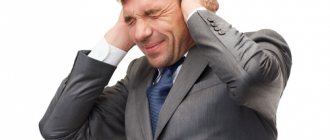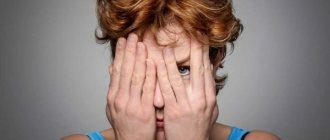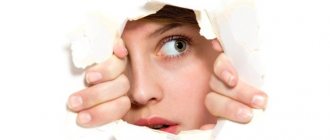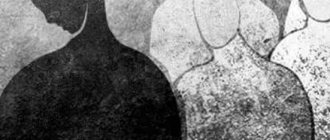One of the destructive and dangerous phobias is phagophobia - a groundless, uncontrollable, panicky fear of choking. In mild cases of the disorder, the patient limits the intake of certain foods. In severe forms of the disease, the individual completely refuses to eat.
With phagophobia, a child or adult does not have any congenital or acquired defects in parts of the digestive tract. It is not possible to identify failures in the processes of mechanical processing of food during chewing and swallowing. The examination reveals no signs of dysphagia caused by inflammatory processes in the oral cavity and pharynx, cicatricial narrowings and neoplasms.
Despite the arguments of logic and the applied volitional efforts, the sick person is very afraid that the product taken will get stuck in the upper parts of the esophagus. A person gripped by irrational fear is convinced that a stuck object will cause mechanical asphyxia - suffocation.
About hypnotherapy. What is regression hypnosis and hypnotherapy? Review of treatment for fear of the dark
Hypnosis: a review of the treatment of fear of riding the subway & psoriasis & social phobia
Hypnosis: review of hypnosis treatment of tachophobia (fear of speed).
Hypnosis: a review of the treatment of social phobia and acrophobia (fear of heights).
Causes of phagophobia
Lack of oxygen as a consequence of mechanical suffocation is one of the reasons why phagophobia occurs.
Other causes of fear of choking:
- Genetic predisposition. Negative associations appear, due to which the fear of swallowing food takes root. Such nerve currents can be inherited.
- Temperament. The innate properties of the nervous system depend on it. Pessimists, suspicious and anxious people are most susceptible to phagophobia.
- Neurotransmitter deficiency in the brain. They can provoke negative currents and cause fear of swallowing food.
- Childhood trauma occurs when a child is forced to eat foods they don't like. Associated with disgust and nausea.
- Visual perception. Sometimes a person eats food while watching a movie and may choke during sudden scenes.
Phagophobia forces you to completely change your diet. The patient refuses to eat large foods. Prefers finely chopped, minced or liquid foods
A person will avoid the following foods:
- baked goods due to the presence of small crumbs;
- fish due to the presence of small bones;
- separate meat dishes due to the presence of bones;
- fruits (watermelon, pumpkin, melon, peach, nectarine) and berries (cherries, cherries), etc.
Most people have no fear of drinking liquids at an early stage.
Phagophobia is dangerous due to its consequences. Because of it, a person suffers from anorexia and cybophobia (fear of food and eating it), feels a loss of strength and lack of vital energy.
Anyone who suffers from phagophobia is afraid to establish new social contacts or maintain old ones. He believes that no one can accept his strange behavior.
The patient stops visiting public places and events with large crowds of people. Ignores invitations to catering establishments and family dinners. He creates an individual “liquid” menu for himself, which takes a lot of time.
It is difficult for such a person to make contact with business partners, colleagues, or maintain relationships with relatives, friends, or loved ones. As a result, depression occurs, the desire to develop disappears, and there is no interest in previously loved things.
Ovophobia - fear of eggs
A girl transformed a gray nursery without much investment: what the bedroom looks like
I turned a pallet and stones into a table and two chairs: now there is a place to have lunch in the yard
Nicolas Cage's new horror film "Wally's Wonderland" promises to be successful
Alfred Hitchcock is a real ovophobe. He is terrified of chicken or quail eggs. He believes that blood is less disgusting than the sight of egg yolk.
Symptoms of phagophobia
At the initial stage, it is easy to determine the presence of phagophobia. A person is afraid of choking on his own saliva, solid food, or liquid, but he is able to overcome fear.
This disorder is accompanied by symptoms:
- rapid heartbeat;
- internal trembling;
- dizziness;
- frequent and rapid, difficult breathing;
- increased sweating;
- nervousness;
- fussiness;
- constant irritability;
- feeling of muscle weakness;
- disorientation;
- sleep disturbances, etc.
A person with phagophobia chews food for a very long time and thoroughly. The act of swallowing occurs when food is as thick as saliva.
Before eating, each product is tested for the presence of prohibited and dangerous components. A person, having ascertained the quality, buys products from certain manufacturers, knowing the composition of each dish.
Phagophobe chews food for a very long time
Mageirocophobia - fear of cooking
It is a fear of cooking and is technically considered a phobia when it interferes with or demotivates a person to cook. There are several concerns associated with mageirocophobia. Sufferers usually worry about getting poisoned, cooking something completely inedible, or getting hurt in the cooking process. Complex recipes can cause serious fear, while healthy people may fear specific things, such as preparing desserts, feeding a large crowd, or hosting a dinner party.
I learned how to bake buns in a simple pan: my favorite ones are the ones with meat filling
Beautiful and funny tattoos based on photographs from Korea
“The system needs to be brought to fruition”: online learning will be included in aspects of education
Fear of choking on a pill
Some phagophobes are afraid to swallow pills. This is due to their appearance. Swallowing solid objects is unnatural.
For people with this disorder, swallowing causes panic and terror. Scientists have developed several effective ways to take pills without the risk of choking.
Ways to swallow medications for phagophobia:
- Pills. Take a bottle of water and the required pill. Place it on your tongue. Press your lips tightly against the neck of the bottle. Tilt your head back and drink water. Its quantity is unlimited. In the study, scientists saw that 20 ml of liquid is enough for most people.
- Capsules. The capsule is less dense than water, making it easier to swallow. Drink water along with the capsule.
Those who have managed to cope with the disorder are advised to crush the tablets into a powder and consume them with water.
It is recommended to soak the capsule in a glass of water for 3-5 minutes. The shell will become softer and easier to swallow. One way is to mix the contents of the capsule with small pieces of banana.
Many phagophobes are afraid of choking on a pill
Carnophobia - fear of meat
The term itself comes from the Latin word carnalis, which means “carnal.” Even if meat doesn't make you cringe, this word certainly will.
This is a very serious phobia, which again mainly begins in childhood. Those with carnophobia feel sick or nauseous at the mere sight of raw meat. Even the smell of meat being cooked somewhere nearby triggers a gag reflex. It is very difficult for such people to be around those who eat non-vegetarian food.
From Yangmingshan in Taiwan to Elk Island in Canada: the quietest places on the planet
A man changed his view of animals stealing vegetables by installing a camera in his garden.
Hermione - yes: Harry Potter fans argue which character could become bad
Treatment of phagophobia
Treatment of the disorder is necessary to restore normal functioning of the body. You need to be examined by a neurologist and psychiatrist. It is important to normalize nutrition, improve digestion and metabolism.
Stages of treatment
Consultation. The doctor tells the patient about the structure of the digestive system and the main processes in it, answering the questions:
- how food moves from the larynx to the stomach;
- why suffocation may occur;
- what are the consequences of an unsuccessful act of swallowing;
- why treatment is necessary and how quickly the first results will appear.
The topic of safe swallowing of solid foods needs to be addressed. It is important to tell you what to do if you or someone nearby chokes.
- Psychotherapeutic work with the patient. Children's fears and traumas, negative experiences and worries are clarified. At the same time, the client is encouraged to try eating solid foods again. This is done gradually, without haste.
- Drug treatment. The characteristics of the patient’s body and mental state are taken into account. Medicines are prescribed.
The final stage is successful if the doctor has cured the patient. The average treatment period is 3 months.
A psychologist will help identify the cause of fear
Possible complications
The lack of psychological help leads to a worsening of the patient's condition. The following ailments can develop through constant fear and negative beliefs:
- Kibophobia is a complete refusal to consume any nutritious foods. It can result in anorexia, which is fatal.
- A mild degree of the disease is observed with complete restriction of solid food. Patients are switched to liquid feeding, which excludes sufficient nutritional replenishment.
- The fear of swallowing food produces a refusal to visit places where food is sold - restaurants and ordinary cafes. A person begins to isolate himself on his own problems and stops communicating with loved ones.
- Long-term depression develops because people spend all their waking hours planning their own diet.
Based on the impact that this disease has on a person, it is impossible to ignore the need for treatment and specific care in this situation.
Treatment methods
Depending on the stage of the phobia, different methods based on psychotherapy are used. The main ones among them are neurolinguistic programming and cognitive behavioral therapy. It is necessary to form an adequate perception of the patient’s condition and the symptoms of phobia.
Neurolinguistic programming
It has long been used to treat phobias, including the fear of swallowing food. Consists of 5 components: symptoms, causes, results, resources, effects. Sequence of treatment:
- Collect information about the symptoms of the disease. Discuss them with the patient and find out the reasons.
- Help the client set goals. You need to ask what he expects from the treatment and how he will act after it ends.
- Goal analysis. If a person is in a positive mood, further motivate him.
- Fighting with yourself is difficult. Talk with the patient about the necessary resources to eliminate the phobia.
This therapy allows you to provide basic information for prescribing a treatment regimen.
Analysis helps the patient see the essence of the problem and possible ways to solve it. It happens that 2-3 sessions are enough for complete recovery.
Neurolinguistic programming is an effective method for treating phobias
Cognitive behavioral therapy
The method is approved by WHO and is one of the most effective. The essence of treatment is to identify and eliminate negative thoughts. During therapy, answers to the following questions are given:
- who said it would be so bad;
- why don't you like it;
- who decided that this would last forever, etc.
The main thing is that the client answers himself. The doctor’s job is to give the right direction. As a result, a person must change negative thinking to positive.
The technique helps eliminate fictitious beliefs. A person learns to independently identify and reject negativity, to identify erroneous thoughts that cause anxiety.
The first stage of treatment is consultation, the second is putting what you hear into practice.
Differences from other diseases
You can distinguish a nervous spasm of the pharynx from other diseases based on the following signs:
- absence of problems and discomfort in the throat at night, during sleep or in the morning, immediately after waking up (due to the rest of the brain, which does not send signals for a spasm to occur);
- the appearance of a lump in the throat after vigorous activity has begun and the body has finally awakened;
- passion for some interesting activity or complete immersion in work contribute to the disappearance of unpleasant symptoms, or rather to the switching of the brain to other tasks, which leaves it no time for neurosis-like manifestations.
Drug treatment
The optimal solution is to combine drug treatment and psychotherapy.
- Antidepressants are ideal drugs of the SSRI class. They stabilize the state of mind, normalize the emotional background, improve mood, and have a positive effect on the affective sphere.
- Anxiolytics suppress stress and eliminate anxiety. Relieves emotional stress and anxiety. Do not cause addiction.
- Anticonvulsants. They have no side effects. Treatment does not take much time.
Lachanophobia - fear of vegetables
The continuation of the phrase “The slower you go, the further you will go” completely changes its usual meaning
These balconies emanated despondency. A few plants and trinkets and a balcony is heaven.
"Inglourious Basterds" - Ravenclaw: Where would Pitt's characters be at Hogwarts
Although it may be difficult to teach your child to eat vegetables, dislike is not the same as fear. Having a fear of vegetables is nothing more than lachanophobia. One type of vegetable causes a feeling of panic. Fear overwhelms a person so much that he cannot even touch them.










